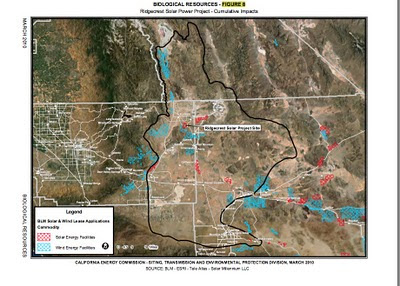Calico Solar Decision May be Pushed Back
The California Energy Commission (CEC) just posted notice that it will be continuing evidentiary hearings on 25 August, which will likely push back its 24 August deadline to issue the Presiding Member's Proposed Decision, per my previous post . It's not clear how much longer it will take for the CEC to wrap up the evidentiary hearings and issue the proposed decision, but the CEC is under pressure to make a decision soon since Tessera Solar would need to break ground by the end of the year to qualify for public financing under the American Recovery and Reinvestment Act.



